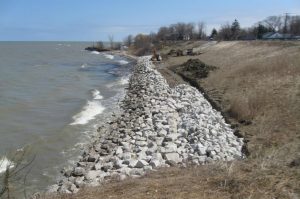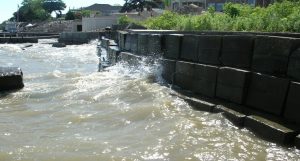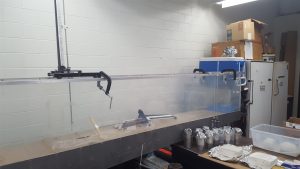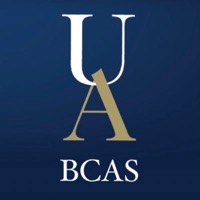[Past Projects]
Dr. Teresa Cutright, Dr. Henry Astley and Elena Stachew
According to the United Nations, 40% of the world’s population lives within 100km of a coastline and this number is projected to increase. Coastal protection structures, typically made of rock, steel and concrete, are used to protect homes and businesses from waves, storm surges and flooding. On the Lake Erie shoreline in Ohio, 80% of the shoreline is hardened/protected with concrete, steel and rock.


Example of revetment – provided by Jim Park, ODNR Example of seawall – provided by Jim Park, ODNR
Lab-scale hydrodynamic studies will be conducted using a 11 ft. re-circulating flume in the Hydraulics Lab of the Civil Engineering Department. The studies will test next-generation biomimetic forms and biologically friendly materials for coastal protection structures that are more compatible with aquatic life in Lake Erie.
You will help build a wave plate and actuator system using Arduino components to create realistic lake wave profiles in the flume. You will also help build a program in Python for real-time video tracking of changing wave dynamics. There may be an opportunity to build smaller-scale wave tanks for use in classrooms and other public educational settings. Check out this Youtube video for an idea!

Recirculating flume at University of Akron’s Hydraulics Lab
It is highly recommended (though not required) that you pair this tiered mentoring project with enrollment in the Special Topics undergraduate biology course 3100-495:007 Digital Skills for Biologists (3 credits). Expect to learn about 3D modeling, 3D printing, videography and image tracking, in addition to Lake Erie’s natural history, food web dynamics and systems ecology. We are interested in undergraduate students from any major that are willing to learn any of the above skills and subject areas. No prior experience is necessary.
Work at the interface of engineering and biology to improve nearshore aquatic habitat conditions on Lake Erie with a Biomimicry Fellow.
